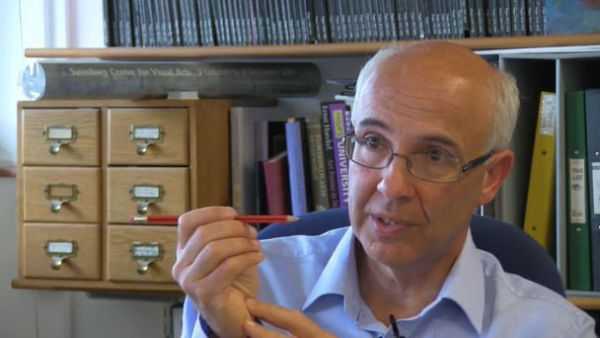

Hardcover
-
PICK UP IN STORECheck Availability at Nearby Stores
Available within 2 business hours
Related collections and offers
Overview
The science of change from cells to culture
Cells to Civilizations is the first unified account of how life transforms itself—from the production of bacteria to the emergence of complex civilizations. What are the connections between evolving microbes, an egg that develops into an infant, and a child who learns to walk and talk? Award-winning scientist Enrico Coen synthesizes the growth of living systems and creative processes, and he reveals that the four great life transformations—evolution, development, learning, and human culture—while typically understood separately, actually all revolve around shared core principles and manifest the same fundamental recipe. Coen blends provocative discussion, the latest scientific research, and colorful examples to demonstrate the links between these critical stages in the history of life.
Coen tells a story rich with genes, embryos, neurons, and fascinating discoveries. He examines the development of the zebra, the adaptations of seaweed, the cave paintings of Lascaux, and the formulations of Alan Turing. He explores how dogs make predictions, how weeds tell the time of day, and how our brains distinguish a Modigliani from a Rembrandt. Locating commonalities in important findings, Coen gives readers a deeper understanding of key transformations and provides a bold portrait for how science both frames and is framed by human culture.
A compelling investigation into the relationships between our biological past and cultural progress, Cells to Civilizations presents a remarkable story of living change.

Product Details
| ISBN-13: | 9780691149677 |
|---|---|
| Publisher: | Princeton University Press |
| Publication date: | 05/27/2012 |
| Pages: | 336 |
| Product dimensions: | 6.42(w) x 9.32(h) x 0.96(d) |
About the Author
Enrico Coen is a plant molecular geneticist based at the John Innes Centre in Norwich, United Kingdom. He is the author of "The Art of Genes", a fellow of the Royal Society, and a foreign associate of the U.S. National Academy of Science. His awards include the Linnean Gold Medal and the Royal Society Darwin Medal.
Table of Contents
INTRODUCTION: A RECIPE FOR CHANGE 1
History and Form 3
Life’s Creative Recipe 8
CHAPTER ONE: LOOPS AND LOTTERIES 13
Principle of Population Variation 16
Principle of Persistence 20
Principle of Reinforcement 23
Principle of Competition 24
Combining Principles 29
CHAPTER TWO: FROM GENES TO ECOSYSTEMS 34
Principle of Cooperation 36
Principle of Combinatorial Richness 40
Wandering Clouds 44
Principle of Recurrence 48
The Origin of Species 52
Species and Ecosystems 57
A Recipe for Evolution 58
CHAPTER THREE: CONVERSATIONS OF AN EMBRYO 61
Turing’s Principles 63
Patterning a Cell 68
Switching Genes On and Off 70
A Molecular Fight 73
Looking into Gradients 76
A Common Form 80
CHAPTER FOUR: COMPLETING THE PICTURE 84
An Embryonic Cocktail Party 85
A Cooperative Eff ort 87
Regulatory Riches 88
Building on the Past 90
The Expanding Canvas 93
Deformation 97
The Three-Dimensional Canvas 105
A Common Recipe 108
CHAPTER FIVE: HISTORY IN THE MAKING 111
Unicellular Beginnings 114
Moving up a Scale 115
Zooming and Growing 118
A Recipe within a Recipe 120
CHAPTER SIX: HUMBLE RESPONSES 122
Making Adjustments 124
Flora’s Story 127
The Bite of Venus 132
The Sensible Sea Slug 135
Patterns in Time 140
Human Responses 143
Carving up the World 147
CHAPTER SEVEN: THE NEURAL SIBYL 150
The Prophetic Dog 152
Predictive Neurons 155
Learning from Discrepancies 157
Pavlov and Punishments 163
Core Principles 164
A Neural Journey 168
Staying on the Move 169
A Recipe for Learning 173
CHAPTER EIGHT: LEARNING THROUGH ACTION 175
Calibration 176
Jumping Eyes 178
Visual Shifts 181
Learning to Calibrate 184
Action-Learning Loops 187
Smooth Movements 188
An Active Journey 193
Learning with Others 197
CHAPTER NINE: SEEING AS 200
The Neural Eye 204
Multiple Eyes 208
Seeing through Models 211
Learning at Many Levels 213
Top-down and Bottom-up 216
Competing Interpretations 217
A Question of Style 220
Creative Acts 228
CHAPTER TEN: FRAMING RECIPES 232
Development of Learning 233
Basic Instincts 237
Flexibility versus Directness 242
CHAPTER ELEVEN: THE CRUCIBLE OF CULTURE 244
The Apprentice 245
Fruitful Populations 248
Lasting Change 250
Cultural Reinforcement 252
The Force of Competition 254
Cooperative Eff orts 255
A Cultural Mix 257
Propelled by the Past 260
A Cultural Recipe 263
CHAPTER TWELVE: THE GRAND CYCLE 266
Cultural Origins 267
Possible Worlds 270
Nature’s Self-Portrait 275
Acknowledgments 281
Notes 283
References 299
Illustration Credits 307
Index 313
What People are Saying About This
"Cells to Civilizations explores the extraordinary transformations that are the basis of life. Simple cells evolve into complex animals. Single cells develop into a human being. Newborns learn how to behave in society. Societies create cultural institutions. Coen shows that a small number of principles applies to all these transformations. This book provided me with a real feeling for the unity of life. It gave me a glimpse of that mysterious and awesome circle through which evolution generates not only life, but also self-understanding."—Chris Frith, emeritus professor, University College London"This is a charming, clever, and thought-provoking book. With examples and metaphors, the book advances the idea that the same basic principles operate in evolution, development, learning, and culture."—Stephen C. Stearns, Yale University"This attractive book presents a unified account of the emergence of living organisms and seeks common principles across different levels—from the cell to human culture. The clarity of writing and the use of analogies and works of art to illustrate points will make it valuable to both general readers and specialists. The breadth of this book is unmatched."—Michael Corballis, University of Auckland
Related Subjects
Videos


